|
|
By Jo Nova
Written just in time for the UN Climate junket, Anna Lee, 21, declares she’s too worried about climate change to have children.
In the past these declarations have been a part of a Doomer fashion show where people who probably wouldn’t have had children anyway brag about how saintly they are for not having them. They wear their childlessness as a badge of glory. But Anna Lee’s declaration sounds more like a cry for help from someone raised on a climate fantasy. She doesn’t feel she can offer her children a future, perhaps because she doesn’t have one herself. She has, after all, been raised by the village on a dead-end religion. The world will only be saved if impossible things happen. Storms, fires and floods can be stopped with whirly-gigs and magical silicon carpets, don’t you know? The solution is so obvious, and it’s cheap and free too, but people in our tribe are too stupid and greedy to do it. Imagine what a depressing message that would be — born into a craven mob of colonizing lemmings who didn’t do anything good like ending slavery, inventing antibiotics or walking on the moon. Losers…
Some subset of Gen Z have been turned into perpetual climate alarm machine.
On the other hand, there’s also an activist element here. News editors are milking youthful angst to help the UN agenda. And Greenpeace are holding the next generation hostage unless they get their way on climate change. The Greenpeace plan, called “No Future, No Children” aimed to get teenagers to pledge not to have children unless the government fixed the weather, or helped oligarchs get very rich, or something like that. Thankfully I don’t think their 2019 plan caught on. The webpage CNN links to is now a shipping container company. But what could go wrong with coercing adolescents into making pledges they may later regret?
If temperatures weren’t rising, I’d choose the name “Athena” for a girl. If the rivers were safe, I’d choose “William” for a boy. If I could breathe clean air on my morning commute, I’d paint the nursery a warm yellow. If I could see hope for a sustainable future on this planet, I wouldn’t be spending time mourning the children I’ll probably never have.
If things were different, I’d be honored to become a parent — indeed, I think there is no greater privilege or responsibility. But each day, the current state of the world dissuades me more and more from having children. Like many folks in Gen Z (those born between 1997 and 2012), my main concern is climate change. And, as climate catastrophes are already well in motion (coupled with a host of related socioeconomic and equality issues), I feel as if I would be doing an increasingly irreparable injustice to any children I would bring into this world with my inability to offer them a future.
 Is she the product of Green Woke parents who felt guilty themselves? Sounds like her childhood may have been filled with doomsday clocks. Is she the product of Green Woke parents who felt guilty themselves? Sounds like her childhood may have been filled with doomsday clocks.
At my age, concrete discussions of family and having children are still far down the line — but this is a decision I’ve held firmly to since I, myself, was a child. Passing on my own climate anxiety would be akin to a generational curse — nor do I think the joys of childhood should be tampered with doomsday clocks, higher risks of disease and health issues and climate change’s ripple effects on the economy, violent conflict and education.
It certainly wasn’t filled with patriotic pride. For Anna, the US is not a culture, just a place on a map:
As a US citizen, I wield enormous privilege by virtue of location, alone…
Climate anxiety knows no national borders — according to a study from the University of Bath, nearly 40% of 16- to 25-year-old participants from several countries stated that they were hesitant to have children because of climate change.
Threats for climate change!
Other organizations, such as the Canadian “No Future No Children” group, have gained considerable traction among teens, many of whom are pledging not to have children until their government takes climate change more seriously.
…many of my decisions emerge from a need for control. Like many Gen Z and Millennial individuals, I feel largely powerless within today’s environmental and political climate.
The pointless rituals of comfort to soothe the anxiety:
With larger policy control out of the picture, I find myself grasping for any miniscule way to assuage my climate anxiety — finding green travel alternatives, reusing plastic bottles until they fall apart, buying locally sourced food and repurposing any clothes or unwanted items. My decision over whether to have children is yet another example of exerting control over events that seem to be, at this rate, uncontrollable.
The purpose of the story (for CNN at least) is to push the propaganda for the UN annual junket. The editors even admit that:
This story is part of CNN’s coverage of climate change ahead of the COP28 summit …
In reality of course, for most fertile adults it’s not about climate change but about the cost of living. Give them cheap fossil fuels and a culture that believes in itself.
h/t Willie Soon.
10 out of 10 based on 109 ratings
7.7 out of 10 based on 15 ratings
8.2 out of 10 based on 25 ratings
8.3 out of 10 based on 15 ratings
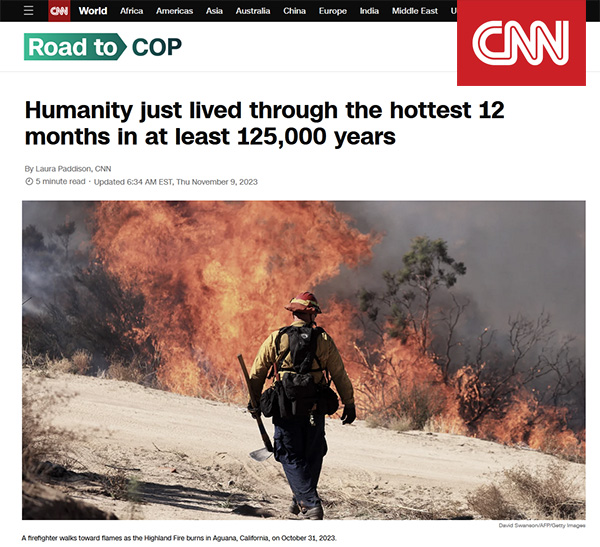
CNN
By Jo Nova
Hottest 12 months in 125,000 say EU Soothsayer scientists
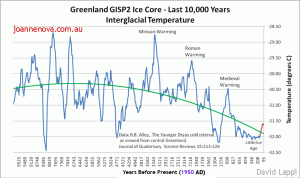 UPDATE: This graph shows the ice-core data up until 1855. Think for a minute about how stupid this claim is that no single year, not one, in the last 125,000 years was warmer than the last 12 months. Cavemen are rolling in their graves.
It’s “virtually certain” said two journalists at Reuters. It was broken by 0.4 degrees!
Homo Sapiens have had satellite data for 44 years, which only leaves 124,956 years of extrapolation to guess at the rest. Not one journalist at the ABC, Sydney Morning Herald, CNN, or anywhere, asked the “scientists” — how would you know? Do tell us, professor, what exactly was the temperature from November 6,789 BC to October 6,788? And to a tenth of a degree, and globally. I heard it was hot?
Try to imagine what kind of miraculous science makes these headlines make sense? Did the EU team find neolithic newspapers hidden in caves in Turkey? Could they reconstruct temperatures from 10,000 BC to 1978 to a tenth of a degree Celsius. And not just Turkish temperatures but ones in Timbuktu and Peru too? Those goat herders needed a satellite program. Perhaps clay pots powered with goat dung?
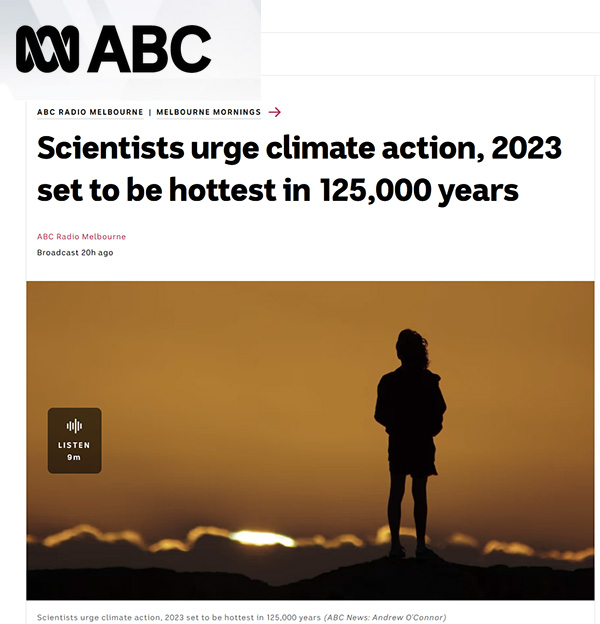
ABC
It’s as if thousands of hotter Holocene years never existed
Studies all around the world show sea levels were as much as 1 – 2 meters higher 6,000 years ago, and have been falling for thousands of years. For example, studies on mangroves in Brazil show sea levels were about 2.7 meters higher in the mid-Holocene, and mangroves grew 34 kilometers further inland. (Fontes et al 2017). How does that happen if the world was cooler then?
NoTricksZone lists sea level studies all over the world and CO2 Science lists other proxies. 6,000 years ago the world was so much warmer, the Sahara was lush green and wet. Even the sacred, revered ice cores from both Greenland and Antarctica show it was warmer. The deepest oceans around Indonesia were 2 degrees warmer 10,000 years ago. And 6,000 boreholes drilled around the world agree.
Glaciers in Europe were so much smaller, that as the world cooled and they grew, they swallowed up thousands of pieces of evidence. In the recent warming some 4,000 new tools, bridles, pieces of leather have melted out of Norwegian glaciers alone.
Many Pacific Island have only existed for three or four thousand years — emerging into the sunshine as sea levels fell from the Holocene peak.
This pattern of falling sea levels all over the world doesn’t fit the climate models. Instead of just admitting the models are wrong, researchers call their failure the “Holocene Temperature Conundrum”. We’re going to have to fight for the Holocene — the modelers want to erase it to solve the conundrum.
Shock news for alarmists, poor dears,
And sure to cause climate stress tears,
As 2023 beat,
All records of heat,
Kept for 125,000 years.
–Ruairi
Keep reading →
9.8 out of 10 based on 120 ratings
8.6 out of 10 based on 14 ratings
8 out of 10 based on 13 ratings
By Jo Nova
Top 20 Energy mining nations are planning to increase production, not decrease it.
Despite 151 nations signing the Paris Agreement, the UNEP has all but admitted that most of the world is not even pretending to meet their emissions promises. As is obvious in the graph below, governments of the top 20 producers of the evil coal, oil and gas are planning to dig up even more of it by 2030 than they do now. These 20 nations produce 80% of the world’s fossil fuels and somewhere out there are lots of customers.
The report appears to be a scorecard to guilt-trip the 20 naughty nations into giving up warmth, food or billions of dollars in exports, but it reads like the Paris Agreement is pure charade.
Stockholm, 8 November 2023 – A major new report published today finds that governments plan to produce around 110% more fossil fuels in 2030 than would be consistent with limiting warming to 1.5°C, and 69% more than would be consistent with 2°C.
Who are we kidding?
The Production Gap really means “The Overshoot”.
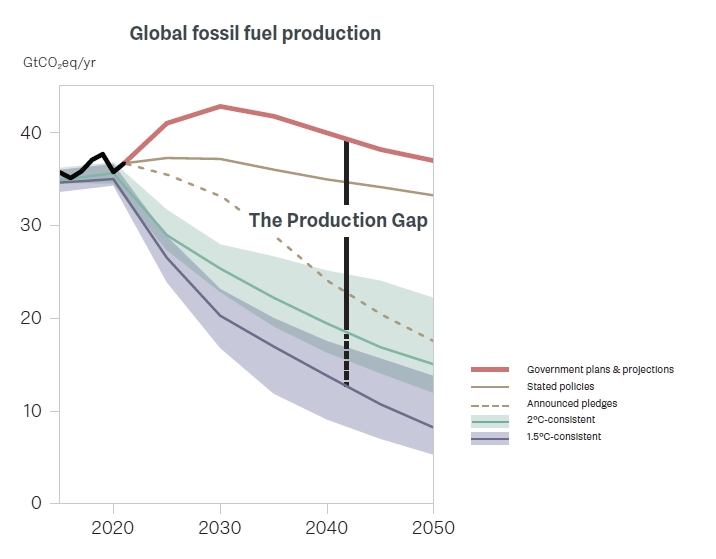 Figure ES.1
The fossil fuel production gap — the difference between governments’ plans and projections and levels consistent with limiting warming to 1.5°C and 2°C, as expressed in units of greenhouse gas emissions from fossil fuel extraction and burning — remains large and expands over time. (See details in Chapter 2 and Figure 2.1.) https://www.unep.org/resources/production-gap-report-2023 Speaking of which China just opened the new 1,800 kilometer Haoji Railway in 2019* — specifically to carry coal
It has 770 bridges spanning a total of 381 kilometers and 468 kilometers of tunnels. They started it in 2015.
No one is holding back on fossil fuels here: Wow, that is some bridge.
REFERENCE
The 2023 Production Gap Report: “Phasing down or phasing up? Top fossil fuel producers plan even more extraction despite climate promises” is produced by Stockholm Environment Institute (SEI), Climate Analytics, E3G, International Institute for Sustainable Development (IISD) and the UN Environment Programme (UNEP).
*Corrected: The Haoji Railway was not opened this year but just before the Covid pandemic broke out, years after “The Paris Agreement” was signed. Thanks Ross.
9.8 out of 10 based on 96 ratings
10 out of 10 based on 7 ratings
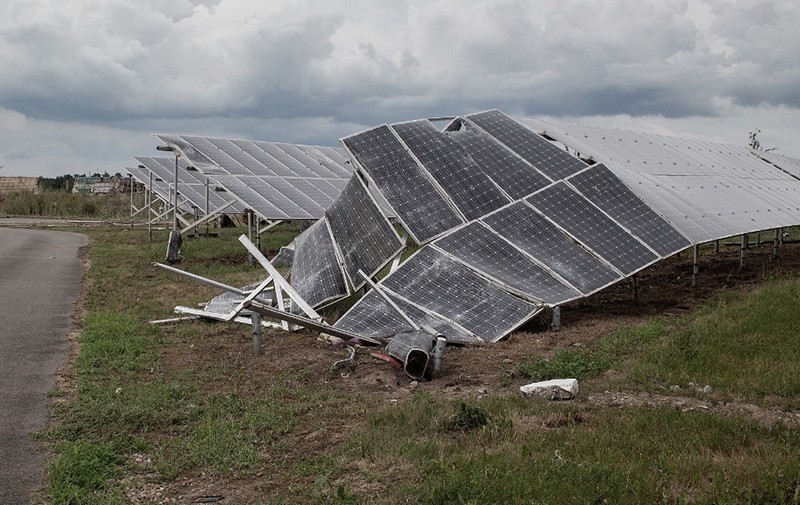
Jo Nova
It seems people only wanted renewable energy if they got cheap loans
Just as the quarterly reporting season revealed crippling losses for wind power and EV’s, so it is with Solar energy.
The general US S&P shares index gained 15% this year but The Invesco Solar ETF (Fund) which invests in solar energy stocks around the world — fell by a dire 40%. Even the US “Inflation Reduction Act” couldn’t save the solar sector. As finances tighten with rising interest rates, apparently solar panel orders are among the first to be cancelled.
Some of the worst performers in the whole US share market are solar shares, with SolarEdge and Enphase losing 70% each this year. A few weeks ago, the CEO of SolarEdge said revenues this quarter were about half of what was expected. He blamed “unexpected cancellations” from European distributors. But US demand was down too. Indeed, the bad news started in California, the largest market in the US, when the government slashed home solar “net metering” payments in April by about 75%. Suddenly, it was going to take 10 years to pay off the panels. Solar panels were a luxury item.
If only solar panels were cheaper, in tough economic times, everyone would want them.
by ZeroHedge, Oil Price
The renewable energy industry is in full collapse mode this week. First, Orsted A/S, the world’s largest offshore wind farm developer, abandoned two major US projects due to supply chain and interest rate impacts, and now solar stocks are being clubbed like a baby seal in US premarket trading on Thursday after solar equipment-makers SolarEdge and Sunrun reported dismal guidance amid waning demand.
That’s a nasty surprise:
Let’s start with solar equipment maker SolarEdge Technologies. The company said current quarter revenues are expected between $300 million to $350 million, far below analysts’ estimates of $718.9 million, as per Bloomberg Consensus data.
This has been a sharp turnaround in the solar industry. The rocket-like growth of 2020 has collapsed. And as long as interest rates are high, nobody is talking about a fast recovery:
What happened to solar stocks? Investors ‘pick up the pieces’ after a brutal earnings season
Claudia Assis reports at Marketwatch,
Just about every major U.S. solar company had big quarterly misses…
Shares of Enphase Energy Inc. ENPH, which sells microinverters widely used in solar-power systems and can stand in as a barometer for solar, among other wares, are down more than 70% in the year. As recently as 2020, the stock drew triple-digit yearly gains; it rose 45% last year.
SolarEdge Technologies Inc. SEDG warned late last month that starting in the second half of the third quarter it experienced “substantial unexpected cancellations and pushouts of existing backlog” from our European distributors, a dip it said wasn’t related to the Israel-Hamas war.
Some residential solar companies in the US are down 55-70% too. These are terrible numbers.
Beth Kindig, Forbes
Solar is arguably one of the market’s most sold-off industries at the moment,…
SolarEdge and Enphase are among the S&P 500’s worst performers this year, falling more than 70% each; a significant weakening in US demand starting in Q2 worsened with weakening European demand in Q3, causing revenues to nosedive. Residential solar companies SunPower, Sunrun, and Maxeon have all declined more than 55% to 70%, as well.
The decline was sudden in Quarter 3. What was a 25% growth in quarter two, became a 34% fall:
Enphase echoed SolarEdge’s commentary about weakening EU demand, as European revenues fell (34%) sequentially in Q3, after recording +25% QoQ growth in Q2. That’s a pretty swift QoQ decline in European revenues, which Enphase attributed to “high inventory at our distribution partners along with a softening in demand in our key markets – the Netherlands, France, and Germany.”
The near-term outlook for solar has definitely taken a hit from high rates impacting demand – a forecast from Wood Mackenzie/SEIA is pointing to a YoY decline in US residential solar installations in 2024, weighed down by a sharp contraction in California. Overall, the group expects installations to drop (4%) in 2024, dragged down by a (38%) contraction in California primarily due to the shift to NEM 3.0.
________________________________________________
10 out of 10 based on 94 ratings
9.7 out of 10 based on 9 ratings
8.5 out of 10 based on 12 ratings

By Jo Nova

Imagine you built hundreds of wind turbines off your coast and then found out they reflect the signals used by your air defense radar?
It turns out that large rotating blades reflect radar pulses rather like planes do, and with future offshore wind turbines as tall as the Eiffel Tower and 1,000 feet wide, things are only getting worse.
RAF pilots already use the turbines to help them hide in training exercises.
The UK government has quietly spent £18m to try to figure out how to stop this and the best they have come up with is coating the blades in the type of paint used on stealth fighter jets. But the paint on F-22 jets peels off a bit too often, so they are considering something like the new ceramic paint from the F-35 program. But since that’s a top military secret, presumably it won’t be too similar. What could possibly go wrong? Since you asked, last year, after just six months on aircraft carriers, the F-35s were already looking kind of rusty.
Just drive a truckload of money to your local wind subsidy farm. Other plans include adding cameras, microphones, and radio aerials to turbines to detect hostile jets or perhaps some naughty boats and subs.
The German military have asked to be able to veto any wind development within 50 kilometers of their military radars. And given that it has 18 radars that could rule out a significant part of the German coast. The wind industry is not happy.
Imagine you bet your national economy on building thousands more of these by the end of the decade.
Thanks to Oldbrew at Tallblokes:
By Gareth Corfield, The Telegraph
Offshore wind farms blades interfere with radar signals and there are concerns that plans for a significant expansion of turbines in the North Sea by the end of the decade will cause problems for the Royal Air Force (RAF).
Dangers in the North Sea are more than theoretical: a “ghost fleet” of Russian ships were spotted mapping communication and power cables in the area earlier this year, sparking fears that the Kremlin is preparing for a campaign of sabotage.
Some planned wind arrays are 20 miles wide.

A serving RAF officer explains: “If you have three blades on one turbine, that’s three false reflections. Imagine you then put up 10 or 20 turbines.”
Former RAF Tornado instructor Tim Davies recalls using offshore turbines to hide from ‘enemy’ fighter jets during training exercises.
“We used to fly into wind farms and rapidly change direction, knowing that their radar would struggle to see us,” he says.
Just one more reason China and Russia are encouraging the West to build fields of giant industrial wind plants in the ocean.
Photos: Top wind farm (Rhyl Flats) Andy Dingley; RAF Fighter jets photo by Steve Richardson; Gwynt y Mor wind farm, Steve Daniels.
9.9 out of 10 based on 87 ratings
7.5 out of 10 based on 16 ratings
8.2 out of 10 based on 18 ratings
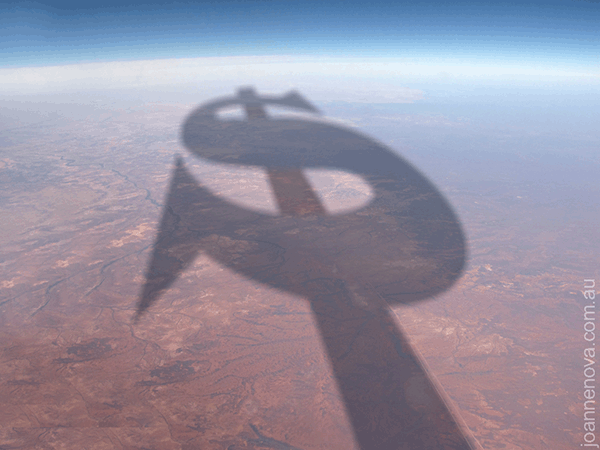
By Jo Nova
Shh! The Monster Banker Funds are secretly saving the World
By sheer coincidence the same day the Australian Treasurer said we’d have to pump up the subsidies on climate targets, a group of largely foreign bankers called for the Australian government to “hurry up with emissions reduction plans “.
 The foreign investment bankers market themselves as “Australian and New Zealand investors” but boast they have $30 trillion in assets, which is a bit of a red flag when the GDP of both nations together is $2 trillion USD. It turns out the blandly named Investor Group on Climate Change (IGCC) is only 10% Australasian: The foreign investment bankers market themselves as “Australian and New Zealand investors” but boast they have $30 trillion in assets, which is a bit of a red flag when the GDP of both nations together is $2 trillion USD. It turns out the blandly named Investor Group on Climate Change (IGCC) is only 10% Australasian:
IGCC represents investors with total funds under management of more than $3 trillion in Australia and New Zealand and $30 trillion around the world. Investors welcome the development of internationally aligned climate risk disclosure requirements in Australia. —IGCC Submission to the Australian Treasury Feb 2023
But being 90% foreign doesn’t stop them putting in submissions to Parliament or pretending to be locals. Even The Australian thinks they are Australian:
An Australian investor group representing members with more than $30 trillion in assets says plans being developed by the Albanese government to decarbonise sectors like energy and agriculture must align to the Paris Agreement’s goal of limiting the global temperature rise to 1.5C.
The fund includes Australia’s largest retirement funds, but quietly also includes our old friends, Vanguard and BlackRock, which together make up $17 trillion of the $30 trillion dollar collective of climate concern. So it’s the two supergiants, plus 100 extras. Who controls this group? It’s not the minnows.
Bankers use your pension funds to make your electricity bill higher
The IGCC says it’s just worried about their clients best returns, as indeed they should be. But given the S&P Global Clean Energy Index is down by 36% this year, their clients best returns would have been in the real Energy Sector which hasn’t gone down at all. If they were serving their clients they would invest in oil and gas. But instead the bankers apparently want the government to rescue their bad investments. Here’s their joint plea for “certainty” which means certain subsidies:
Rose Lewis, The Australian
In a new report released by the Investor Group on Climate Change – which represents Australia’s largest superannuation and retail funds, specialist investors and advisory groups – investors outline their priorities for the government’s decarbonisation plans to ensure the country remains a competitive place to direct capital during the net-zero transition.
“Unless Australia’s economy decarbonises in a manner that is rapid, orderly, and fair, the long-term retirement savings of millions of its citizens will be negatively impacted. [Not to mention all the foreign investors too, says Jo].
“The more orderly the transition to net zero, the better able investors will be to protect and preserve the value of their investments in the best interest of their beneficiaries.”
Given that “profits” from unreliable energy transitions depend entirely on government subsidies and laws, these giant funds are colluding together to lobby for better returns. But if they didn’t ask their 7.5 million Australian and New Zealand customers whether they want smaller retirement funds in order to save the world — then are they really serving them, or screwing them?
$30 trillion dollars is a lot of money to use to threaten and influence a $2 trillion dollar economy. Are the foreign bankers using the threat of withdrawing investments in order to bully more subsidies out of patsy Australian taxpayers and hapless Australian electricity consumers? They could feed the “profits” back to their own retirement funds overseas, while they boost wind and solar manufacturers in China, say, to get more favours with President Xi — the possibilities are endless. One arm of a supergiant fund can rake in the money created through predatory behaviour in another arm.
Or perhaps I’m wrong, and the saintly bankers genuinely lie in bed at night worrying about a half a degree of global warming.
These are the groups concerned about koalas and corals
Members of IGCC:
 Follow the money — the Greens do. Follow the money — the Greens do.
9.9 out of 10 based on 100 ratings
9.3 out of 10 based on 6 ratings
 Who believes the UN anyway? By Jo Nova
A few academics want to add apocalyptic climate labels to meat to turn people off their steaks
The aim, apparently, is to shame and harass people into buying the vegeburgers they aren’t voluntarily buying, and thus make the Weather Gods less angry in 2100 AD. Fortunately, in the trial, 90% of would-be meat-eaters just ignored the label and chose the meat anyhow. This must have disappointed the new prohibitionists.
The Conversation
To gauge the impact of graphic warning labels on the number of people opting for meat, we split participants into four groups. One group saw a warning label beneath the meat option depicting a deforested area and the phrase “eating meat contributes to climate change”. Another group saw the meat option labelled with an image of a man having a heart attack and the text “eating meat contributes to poor health”. A third group saw a label below the meat option depicting caged animals in a wet market, alongside “eating meat contributes to pandemics”. The final group saw the four meal options with no labels.
When no warning label was presented, participants chose the meat options about two out of three times (64%). This figure dropped to 54% with the pandemic warning labels, 55% with the health warning labels and 57% with the climate warning labels.
Judging by the blatant comparison to cigarette smokers, the aim is not so much to connect the supposed cause and effect of climate change, but mostly to tar meat eaters with the same social opprobrium. After all, if the academics just wanted to raise awareness of the so-called “science”, they could write Beef causes Droughts, or Burgers cause Bushfires or Chicken-sticks melt the Arctic. But since that sounds so stupid, because it is, they can’t connect those dots. What they need instead are the catastrophic photos of a landscape that looks like lung cancer. It’s the feeling that matters — a feeling like leprosy.
The message is “People buying these sausages are selfish, stupid people”.
As a bonus, the labels are also free-advertising for The Cause — it would create government funded reminders all over the shop that “climate change ” needs fixing (give us your taxes, your heaters and your cars!).
These food labels are also adverts that pretend the UN is still respected and useful.
The left always go too far. Because there is no principle, just a fashion contest, more is always better – right up until it breaks.
Our mission is to reach the other ten percent who might give up their meat and help them…
Hat tip to Climate Depot
10 out of 10 based on 113 ratings
9.2 out of 10 based on 9 ratings
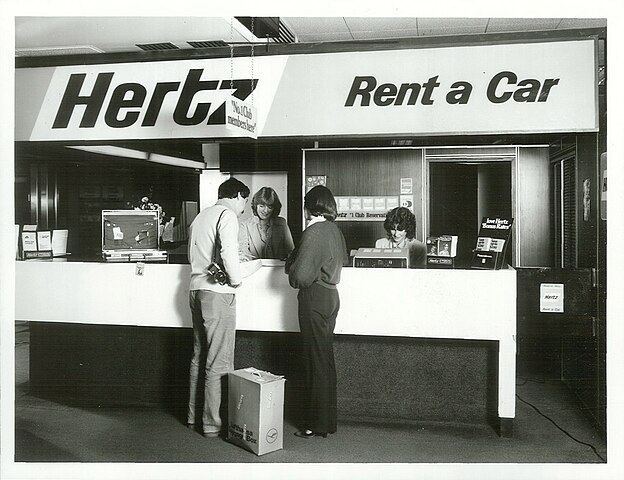
By Jo Nova
Hertz was aiming to make 25% of its fleet electric by 2024, but is finding 11% is too much. Given there are whole nations pushing for 100% EV by 2035 there seems to be a message here…
Let’s thank Hertz for doing that experiment for us. It turns out EV’s didn’t work well in the high mileage Uber-type system because the drivers “drove them into the ground” and repair costs were much higher than expected. So Hertz moved some EV’s to the leisure hire department, but then the revenue per day in the leisure sector fell. Presumably people didn’t want to hire them.
It’s not that this is Bad News week for EVs — it’s quarterly reporting week, so companies have to tell investors things they’d rather not.
Great nations don’t force citizens to buy heavier cars with shorter ranges and bigger repair bills in order to stop bad weather one hundred years from now.
Hertz is slowing down the roll out of EVs onto its fleets as the CEO cites higher than expected repair costs and price cuts.
The rental car company reported lower than expected margins in the third quarter of this year, citing EV repairs as one of the challenges.
“Collision and damage repairs on an EV can often run about twice that associated with a comparable combustion engine vehicle,” said Mr Scherr.

It all started out so well:
Andrew J Hawkins, The Verge
Rental car company Hertz once envisioned itself as the ultimate EV broker, doling out battery-powered vehicles to business travelers, ridehail drivers, and tech newbies in an ambitious plan to grease the wheels for the EV revolution. The company inked agreements with Tesla and Polestar to buy nearly 200,000 EVs. Tesla’s valuation topped $1 trillion on the news.
Part of the problem is linked to Hertz’s plans to rent EVs to ridehail drivers. Of the 100,000 Tesla acquired by Hertz, half were to be allocated to Uber drivers as part of a deal with the ridehail company. And drivers said they loved the Teslas! But Uber drivers also tend to drive their vehicles into the ground. This higher rate of utilization can lead to a lot of damage — certainly more than Hertz was anticipating.
Lora Kolodny, CNBC
Musk frequently says that electric cars require less maintenance than counterparts with internal combustion engines (including plug-in hybrid electrics). …
But electric vehicle owners can face unique maintenance needs, as well. Nikhil Naikal, CEO of Kinetic, a startup that is not affiliated with Hertz or Tesla but provides repairs for electric and autonomous vehicles, told CNBC on Thursday:
“The reality of electric vehicles is that they can be 1,000 pounds heavier or more than gas vehicles, and they move faster, with higher torque. Since they’re extremely zippy and heavier, it’s just physics — the ability to overcome inertia so quickly is going to effect their suspension systems, the brakes and steering columns. It’s counter-intuitive, but even with fewer moving parts they are susceptible to requiring more maintenance. They especially require tire-swapping, because the tires wear out more quickly from that high torque and weight.
h/t Brenda, Stanley and Yarpos.
Photo: NZ archives Christchurch
10 out of 10 based on 98 ratings
|
JoNova A science presenter, writer, speaker & former TV host; author of The Skeptic's Handbook (over 200,000 copies distributed & available in 15 languages).

Jo appreciates your support to help her keep doing what she does. This blog is funded by donations. Thanks!


 Follow Jo's Tweets
Follow Jo's Tweets To report "lost" comments or defamatory and offensive remarks, email the moderators at: support.jonova AT proton.me
Statistics
The nerds have the numbers on precious metals investments on the ASX
|

 Is she the product of Green Woke parents who felt guilty themselves? Sounds like her childhood may have been filled with doomsday clocks.
Is she the product of Green Woke parents who felt guilty themselves? Sounds like her childhood may have been filled with doomsday clocks.



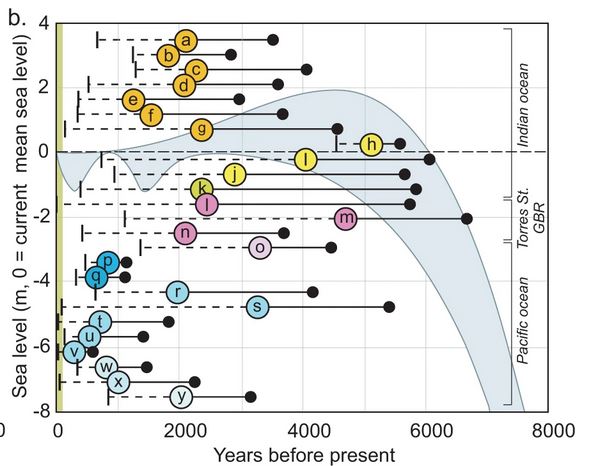






















Recent Comments